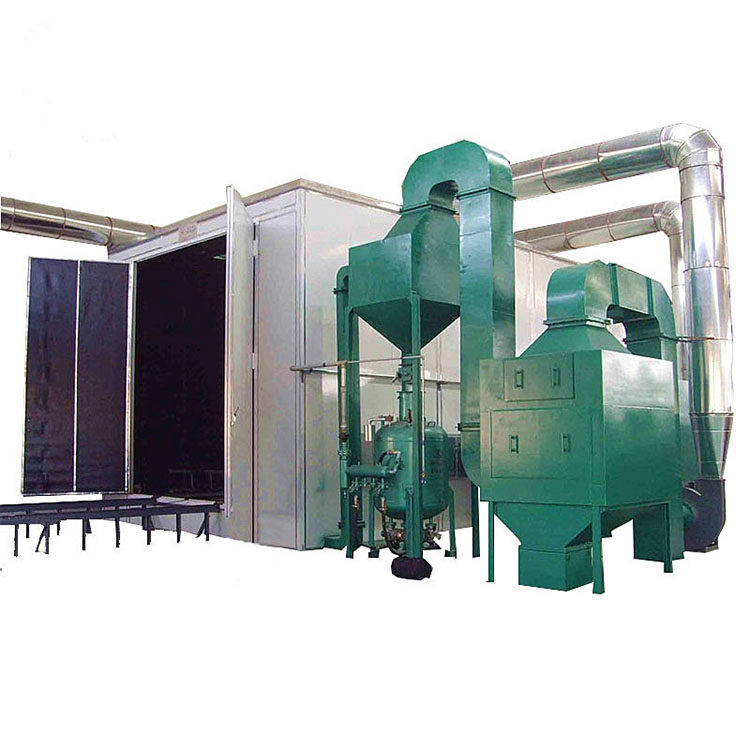Components associated with sandblasting chambers
2024-01-04
A sandblasting chamber, also known as a blast room or blasting booth, is an enclosed space designed for conducting sandblasting or abrasive blasting operations. Sandblasting is a process in which abrasive materials, such as sand or grit, are propelled at high speeds onto a surface to clean, roughen, or shape it. The chamber provides a controlled environment for carrying out these operations, ensuring safety for operators and containment of the blasting media.
Here are key features and components associated with sandblasting chambers:
1. Enclosed Structure:
- Sandblasting chambers are fully enclosed structures designed to contain the abrasive blasting process within a controlled environment. This helps prevent the escape of abrasive media and provides safety for operators.
2. Operator Safety:
- The chamber is equipped with safety features to protect operators from exposure to abrasive materials and dust. This may include proper ventilation systems, protective gear, and visibility windows.
3. Dust Collection System:
- Effective dust collection is crucial in a sandblasting chamber to capture and contain the airborne particles produced during the blasting process. Dust collectors help maintain a clean and safe working environment.
4. Lighting and Visibility:
- Adequate lighting is essential for operators to see the work being performed inside the chamber. Visibility windows or additional lighting fixtures are commonly incorporated for this purpose.
5. Blast Media Recovery System:
- Sandblasting often involves recycling and reusing abrasive media. The chamber may include a recovery system to collect and recycle the used blasting media, reducing waste and cost.
6. Workpiece Handling Systems:
- Depending on the size and type of workpieces being blasted, the chamber may have systems for handling and maneuvering the objects. This can include rails, trolleys, or turntables to facilitate efficient blasting of various shapes and sizes.
7. Blasting Equipment:
- Sandblasting chambers are equipped with blasting equipment, including pressure vessels or blast pots that store and pressurize the abrasive media. Blast nozzles and hoses deliver the media to the surface being treated.
8. Control Systems:
- Modern sandblasting chambers often feature control systems that allow operators to regulate the pressure, flow, and timing of the abrasive blasting process. This ensures precision and consistency in the treatment of surfaces.
9. Floor Design:
- The chamber's floor is designed to facilitate the collection and disposal of spent abrasive media, debris, and contaminants. It may incorporate a sloped or grated floor to aid in this process.
10. Materials of Construction:
- Sandblasting chambers are typically constructed of durable materials that can withstand the abrasive nature of the blasting process. Common materials include steel, fiberglass, or other corrosion-resistant materials.
Sandblasting chambers find applications in various industries, including manufacturing, automotive, aerospace, and construction, where the preparation or surface treatment of materials is required. These chambers provide a controlled and efficient environment for abrasive blasting processes while prioritizing safety and environmental considerations.



